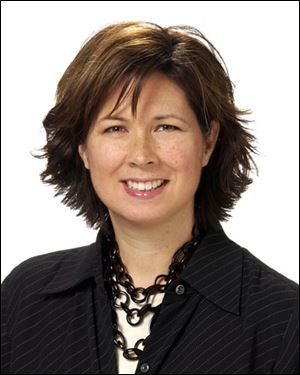
Futurist at Ford looks far ahead
Expert Sheryl Connelly predicts coming trends
6/23/2013Sheryl Connelly is the rare auto industry expert who has almost nothing to do with cars. As Ford Motor Co.’s manager of global trends and future, her role isn’t to look at the industry but outside it, to determine what factors will influence cars in the coming decades.
We sat down with her at Ford’s Irvine, Calif., headquarters to peer into her crystal ball.

Sheryl Connelly
Q: As Ford’s first and only in-house futurist, what exactly are you trying to achieve?
A: It takes Ford Motor Co. three years to bring a vehicle to market, so even if we have the most ingenious idea today, what feels cutting edge at this point might not be. We have no crystal ball, but we can look to five arenas for guidance: social, technological, economic, environmental, and political.
Q: Why those five arenas?
A: You start there because you’ll never be able to predict the future, but those will be the forces that shape the landscape. It gives us a framework to play in this space of “What if?” and “If so, then what?” You talk about the possibilities, and then you explore what it means for the industry — what it does to demand, supply, competitors, retail, the distribution network. Only if you’ve explored all of that do you even ask what that means for Ford.
Q: What timeline are you looking at?
A: The most distant function in the Ford team is advanced product research and engineering. They’re trying to figure out what technologies are on the horizon and what to invest in. Their time horizon is 10, 20 years out.
Q: How far into the future are you looking?
A: 2050 is the furthest I go. This work is a delicate balance because you want to be provocative, but you have to be plausible.
Q: What might be on the horizon 37 years from now that you’re already contemplating?
A: Here’s the paradox. My role as a futurist is to remind people no one can predict the future. There is a range of possibilities. The future of mobility is going to be driven in part by the future of work. And the future of work is going to be driven in part by the future of education. The future of education is going to be driven in part by government spending. Government spending depends on the geopolitical landscape. Everything is interrelated.
Q: Are you seeing any specific trends?
A: There are a couple trends that I know will set the stage. One is a rise in [world] population, from 7 billion to 9 billion. That’s a conservative estimate. Some say we could be up to 10 or 11 billion.
That growth is happening in parts of the world that can least handle it, in China, India, and Africa.
What that means is failing infrastructure, inconsistent governance, widening gaps between the haves and have-nots, and widespread poverty.
So if you step away from that, what about the bread-and-butter markets we sell to? Where will they be?
Q: And?
A: Most established markets are below replenishment rate in terms of population.
The U.S. is one of them. As a byproduct, those markets are rapidly aging. They don’t have enough births to offset the deaths.
People will live longer. If I’m 83 and think I will live to be 85, I might be willing to surrender my car keys, but how does that change if I think I will live to be 105?
Q: How does an aging population affect automotive design?
A: Engineers ask how to ensure the freedom, autonomy, and independence that comes from owning and operating your own vehicle.
We also know that if you have a large segment of the population that’s aging, there are physiological changes that are likely to happen such as reduced response time, impaired vision, and limited range of motion.
We’re already designing for those today. Rear-view cameras let drivers see without turning their necks. Collision alerts help drivers respond more quickly.
Q: Does more people mean bigger cities, and more traffic congestion? How will that affect the car industry?
A: Global gridlock is what our chairman, Bill Ford, worries about. Some people project up to 4 billion cars on the road, but if those cars aren’t moving, they benefit no one. He believes in an idea that was shared by his great-grandfather, Henry: Mobility is a fundamental component to the advancement of freedom and innovation. If you put mobility in peril, does it follow that you put freedom and innovation in peril as well?
What he is thinking about right now is: How do we make sure Ford is positioned to be part of the solution and not the problem?
He spent the last 30 years of his life worried about selling as many cars as possible, and now he worries what will happen if we continue to sell as many cars as possible.
So perhaps the future is about mobility solutions that are multimodal: bike, rail, car. I don’t think there will ever be a global solution.
I don’t think individual vehicle ownership is going away, but in some parts of the world that might not be the pinnacle of aspiration.
Q: What does all this mean for the near term?
A: It means we have to challenge our assumptions about the status quo and where it’s headed.
Cars today are much more than mere transportation, and they’re no longer the quintessential status symbol. I like to think of it as the Swiss army knife of mobility.
When you’re in your car, what else is it doing for you? Is it managing your relationships? Is it your only sanctuary?